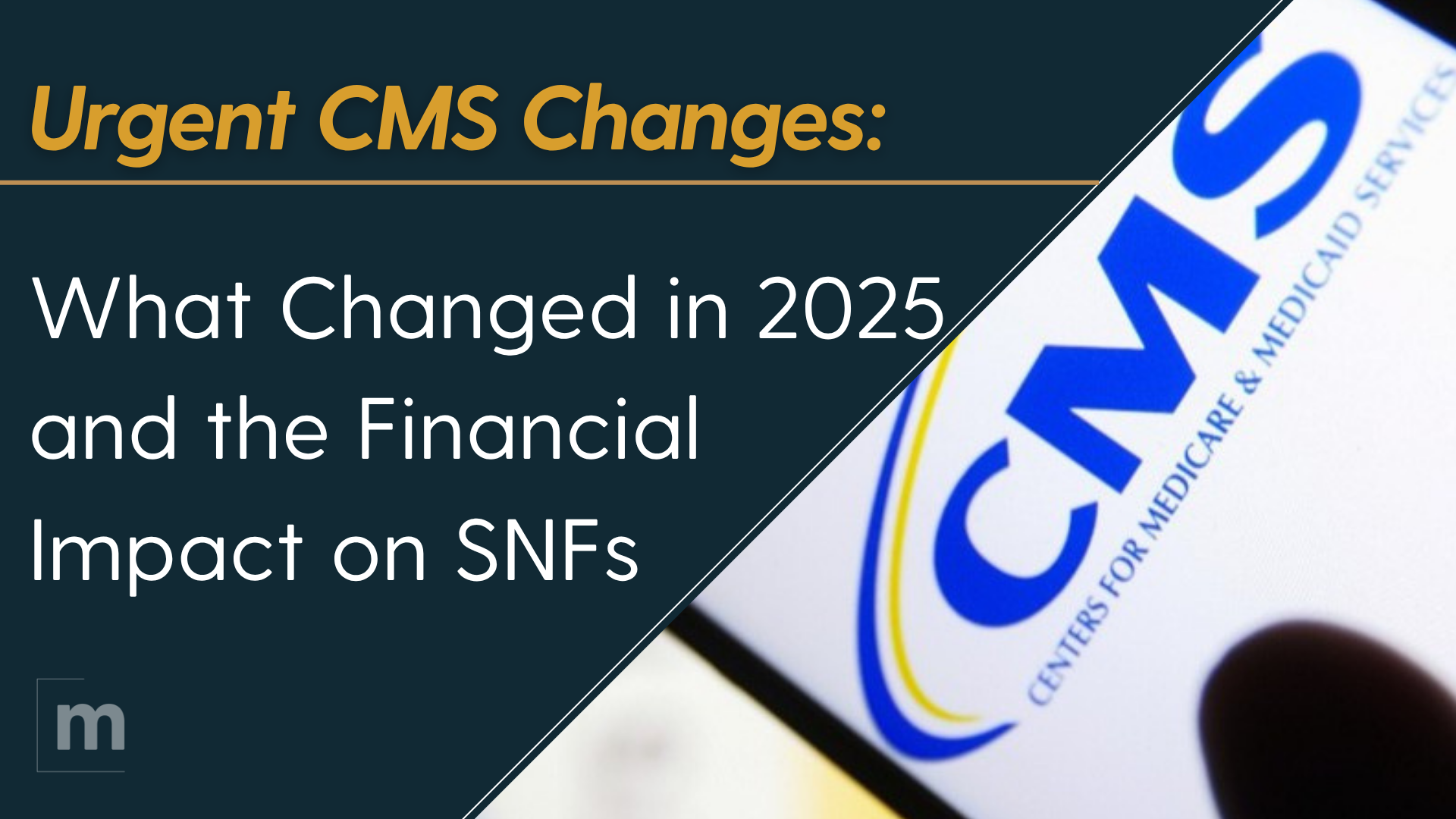Medicare Is Tightening Oversight of Nursing Homes: 2024–2025 Changes and What They Mean for FY 2026

Changes are Coming
Two consecutive Skilled Nursing Facility (SNF) final rules have signaled a change in how Medicare handles oversight of these facilities. The Fiscal Year (FY) 2025 rule (effective October 1, 2024) finalized updates to the SNF Quality Reporting Program (QRP) and expanded the authority of Medicare to issue civil monetary penalties (CMP) as a result of state surveys. The FY 2026 rule tightens the administrative mechanics around reconsiderations for noncompliance with QRP reporting requirements and signals a possible move to shorter MDS submission deadlines. Together, these changes reward facilities that keep records complete, retrievable, and auditable—and penalize those that cannot prove what they did.
What’s Changed?
The SNF QRP update states that each year up to 1,500 SNFs will be randomly selected for QRP validation and must submit 10 complete medical records within 45 days. Missing or incomplete charts will trigger a 2% Annual Payment Update reduction. Records now serve as the evidence for MDS coding, and claims-based QRP measures will also be checked through MAC medical-necessity audits.
Alongside the QRP update, the FY 2025 rule allowed CMS and States to combine per-day and per-instance CMPs, issue multiple penalties for separate findings, and look back three surveys to penalize unresolved deficiencies. Weak or missing records now present a significant financial risk in both payment and survey enforcement.
Starting in FY 2026, reconsideration appeals must include all supporting documentation for them to be considered. CMS is also considering shortening the quarterly MDS submission deadline from 4.5 months to 45 days, signaling a likely shift toward faster reporting.
Preparation Recommendations
In response to these changes and in preparation for possible changes in the near future, facilities may consider assigning a single point of contact for QRP validation, creating a checklist for full admission-to-discharge records, and establishing a reliable iQIES submission process. Close documentation gaps early while residents are still in-house, as facilities with front-loaded documentation processes will adapt more easily if CMS finalizes a shorter submission deadline.
For survey defense, sustain the fix and preserve proof. Keep evidence of durable change implemented after correcting a deficiency. When it comes to QRP validation, updated policies, staff training rosters, and competency validations are part of the documents CMS will be requesting. Because CMPs can now be stacked within a single survey and applied after looking back three surveys, retrievable documentation has never been more important.
Why it Matters
Surveyors are more likely to probe the validity of your nursing services, as well as the completeness of the documentation you provide to support proper staffing and competency, when it comes to higher‑risk clinical care. Wound care, urinary catheter care, respiratory care, and IV therapy are just a few examples that attract closer scrutiny, both due to the increased risk to the patient, as well as the increased reimbursement rate for these services. Something as simple as a single missing certificate of completion can lead to a deficiency, and when related to a high risk service such as these the minimum penalty is automatically increased.
Current guidance tells us that a single per instance CMP can cost a facility anywhere from $2,233 on the low end to as much as $22,330 at the legal maximum. While this number may sound unrealistic, CMS’s newfound ability to stack per-instance and per-day CMP’s makes that number easier to reach than you might imagine. Where minor deficiencies may have gone unincluded in the past, CMS auditors are now able to take every CMP into consideration when determining a facility’s total monetary penalty. When something as simple as a single missing competency can cost a SNF thousands of dollars, and in more extreme examples of missing documentation even hundreds of thousands, keeping thorough records is no longer just established best practice, it is necessary for a facility’s survival.
Consider the following example: A Medicare patient stays for 30 covered days at your facility without any negative outcomes. The patient was on antibiotic IV medication for 7 of those days, increasing their daily reimbursement rate for the entire stay. During that year’s Medicare audit, it is found that one of the nurses that took care of the patient during their stay did not have proof of their IV competency. A more lenient auditor may choose to combine any infractions stemming from this issue into a single low end per-instance CMP for the single unqualified nurse. However, the same situation could just as easily result in three CMPs, one for an unqualified nurse, a second systemic deficiency for lacking competency records, and a third short per-day CMP for the number of days the facility was out of compliance. In this case, the facility could be on the hook for as much as $45k–$67k, all because of a single missing competency.
In Conclusion
The direction of travel is clear. The need for faster data and cleaner linkages between what you code and what you can prove is increasing quickly. The most cost‑effective compliance investment right now is better documentation discipline. Teach your teams that if it isn’t documented, it didn’t happen—and if it isn’t retrievable, it won’t count. In a world where Medicare can both adjust reimbursement for incomplete documentation and stack penalties when survey findings expose the same weaknesses, rigorous documentation will be both your shield and your lever.
Let us show you how we help support nurses through IV Education.
